AANHPI Heritage Month: Big things you may have missed while studying US history
A look at events and figures that shaped American history.
Throughout U.S. history, Native Hawaiians and Pacific Islanders faced colonialism and the exploitation of their land and resources as the U.S. sought to expand its territories and advance its military and economic interests. Meanwhile, Asian immigrants, whose presence in North America predates U.S. independence, faced exclusion amid anti-immigrant sentiments and xenophobic policies.
“I never learned anything about the history of the community that I come from until I took it upon myself to learn as a graduate student,” said Seema Sohi, an Indian-American professor of Asian American studies at the University of Colorado Boulder.
“People don't learn about Asian American Pacific Islander or Native Hawaiians in their K through 12 classrooms,” said Jennifer Ho, a professor of Asian American studies and director of the Center for Humanities and the Arts at the University of Colorado Boulder. “I certainly didn't learn anything about Chinese Americans, which is my own ancestry, except that the Chinese came to build the railroads. But there was no context.”
Watch the ABC News special “Together as One: Celebrating Asian American, Native Hawaiian and Pacific Islander Heritage – A Soul of a Nation” hosted by George Takei on Friday, May 27, at 8 p.m. ET
As we celebrate Asian American Native Hawaiian Pacific Islander Heritage Month with the Soul of a Nation Special, "Together As One," here’s a look at historical events in U.S. history that are often overlooked and the significant figures who fought for change.
The U.S. sets first rules for citizenship
Through the passage of the 1790 Naturalization Act, U.S. citizenship was limited to "any Alien being a free white person" and their children under 21 years of age, who had lived in the United States for at least two years.
Asians, whose presence in North America predates U.S. independence, were prohibited for centuries from becoming U.S. citizens.
The first Asian immigrants
People of Asian descent migrated to what came to be known as the United States as early as 1587, when the first Filipinos landed at Morro Bay near Los Angeles, California – nearly 200 years before the U.S. declared its independence from Great Britain in 1776.
Afong Moy became the first known female Chinese immigrant to come to the United States in 1834 when she was brought by American traders from China to New York City, where she was out on display at exhibits and dubbed “the Chinese Lady.”
Meanwhile, the first Japanese immigrant – a 14-year-old fisherman only known by his first name, Manjiro – came to the U.S. in 1843 after he was adopted by an American captain who rescued the boy from a shipwreck close to Japan’s coast.
A promise of gold
In 1851, thousands of Chinese miners immigrated to California following the discovery of gold, but quickly learned that “the gold mountain was an illusion.” They soon found themselves without resources and away from their families in a country that did not welcome them, according to The Library of Congress.
Thousands ended up working as laborers to build the Transcontinental Railroad, which was completed in 1869 and connected the country.
Chinese exclusion
Chinese immigrants were targeted with the passage of the Chinese Exclusion Act in 1882 – a law that banned Chinese migration for 10 years and restricted Chinese people from gaining American citizenship.
According to Sohi, the law allowed some exceptions for students or merchants, but laborers and others were barred from entry.
The law was repeatedly extended and remained in effect through 1943 until China became a member of the Allied Nations during World War II.
Chinese massacres
Over the next few decades, Chinese laborers would not only face discrimination, but also racially targeted violence amid anti-immigrant sentiments.
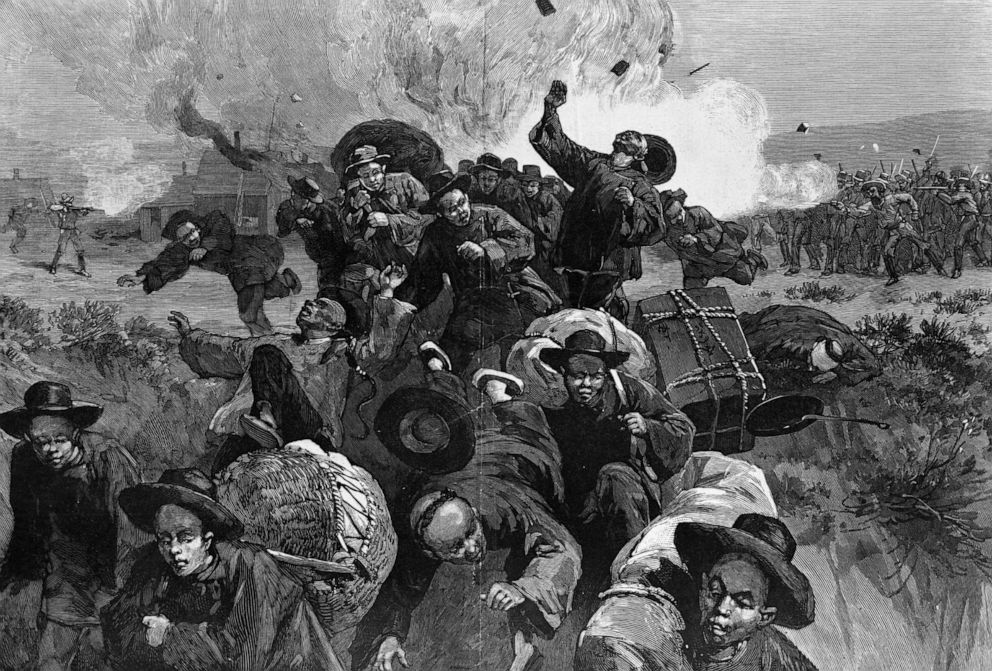
On Sept. 2, 1885 white coal miners, who claimed that their jobs were being taken away, attacked Chinese laborers in Wyoming in what came to be known as the Rock Springs Massacre. Twenty-eight Chinese laborers were killed, according to The Library of Congress.
In May 1887, Chinese miners in Oregon were attacked by a group of white horse thieves. The Hells Canyon Massacre claimed the lives of 34 miners, and while three gang members were put on trial, they were found not guilty by a white jury.
An early fight against segregation
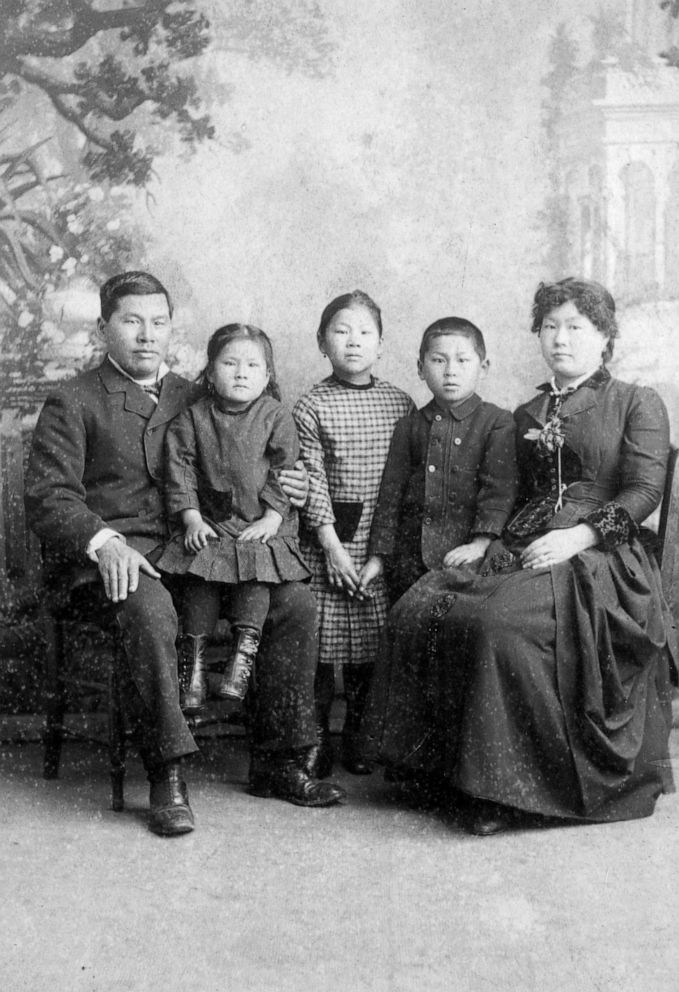
Children with Asian ancestry were excluded from attending U.S. public schools with white children and required to attend "Oriental Schools.”
Decades before the Supreme Court ruled racial segregation in schools unconstitutional in Brown v. the Board of Education, Joseph and Mary Tape, who immigrated to the U.S. from China as children, challenged the exclusion of Chinese children from public schools in Tape v. Hurley.
In the 1885 California Supreme Court case, the Tapes challenged the exclusion of their 8-year-old daughter, Mamie, who was barred from attending a school in their neighborhood.
The state Supreme Court ruled in favor of the Tapes, writing, “To deny a child, born of Chinese parents in this State, entrance to the public schools would be a violation of the law of the State and the Constitution of the United States.”
Although this allowed immigrant students to attend public schools, the California assembly passed a law later that year to establish separate schools for children of “Mongolian or Chinese” descent. Mamie Tape was again denied admission.
The annexation of Hawaii
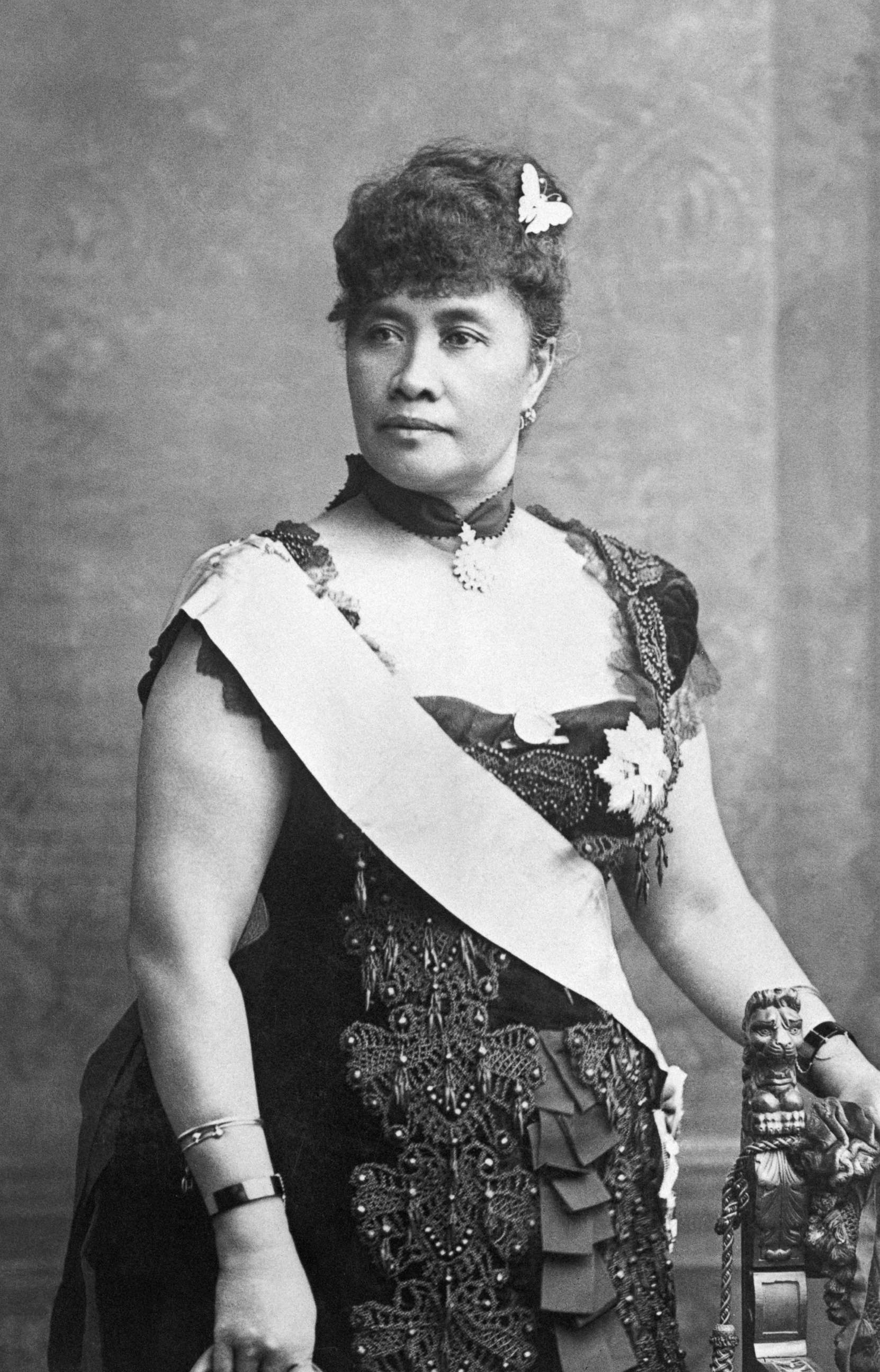
Queen Liliʻuokalani is an early advocate for Hawaiian sovereignty and the last monarch of Hawaii. She fought against U.S. efforts to annex the island.
Queen Liliʻuokalani was overthrown in a coup d'état in1893 that established the Republic of Hawaiʻi , with the ultimate goal of U.S. annexation, which took place in July 1898. Tens of thousands of Hawaiian citizens signed a petition protesting the annexation, which to this day, many scholars say was illegal.
“[Queen Liliʻuokalani] continued to advocate for the independence of Hawaii,” said Davianna Pōmaikaʻi McGregor, a Native Hawaiian historian, who studies Hawaiʻi and the Pacific.
In 1993 the U.S. admitted its role in the overthrow of the monarchy and issued an Apology Resolution, stating that "the overthrow of the Kingdom of Hawaii occurred with the active participation of agents and citizens of the United States.”
The resolution also acknowledges that “Native Hawaiian people never directly relinquished to the United States their claims to their inherent sovereignty.”
An agreement with Japan
Although Japanese immigrants were still allowed to enter the U.S., the United States established an informal diplomatic agreement with Japan in 1907 to curb Japanese migration amid rising anti-Asian and immigrant sentiments.
The agreement, known as The Gentlemen's Agreement, saw Japan institute a limit on Japanese workers immigrating to the U.S. Meanwhile, the U.S. allowed Japanese-American children to attend schools with white children and allowed Japanese immigrants who were already in the country to marry women in Japan and bring their wives to America.
“This is how you have the ‘picture bride’ phenomenon, in which Japanese men who were already in the U.S. married women [in Japan] through the exchange of pictures,” Sohi said. “They were able to come here and establish a community and a second generation, which was unique to the Japanese American community.”
The fight for citizenship
But Japanese immigrants were still barred from getting citizenship – an issue that came to a head in 1922 when Takao Ozawa, a Japanese immigrant who had been living in the U.S. for 20 years, argued before the Supreme Court that Japanese people should be classified as “free white” and be granted citizenship under the parameters of the 1790 Naturalization Act.
The Supreme Court ultimately ruled against Ozawa, writing in a unanimous opinion that "the words 'white person' were meant to indicate only a person of what is popularly known as the Caucasian race."
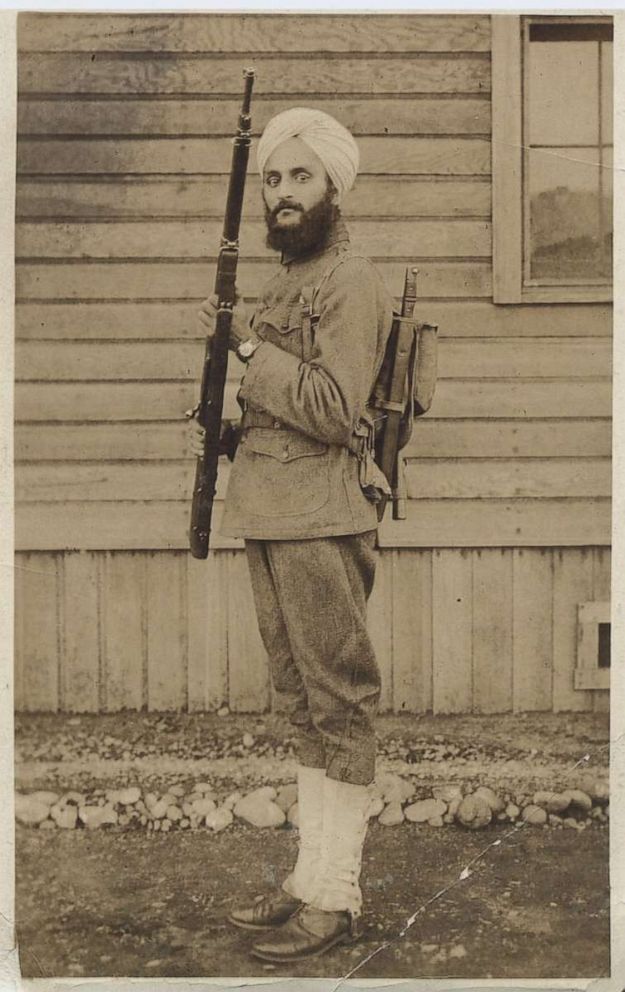
In 1923 the issue again came before the Supreme Court when Bhagat Singh Thind, an Indian American and World War I veteran, challenged a decision to revoke his citizenship due to his race.
Sohi said that Indian immigrants like Thind were “scientifically classified” as “Caucasian” and were initially granted citizenship, but Thind’s citizenship was revoked after the Bureau of Naturalization took issue with the decision, citing his race.
Thind, a practicing Sikh, challenged the decision, but the Supreme Court ruled against him, determining that he is not a "white person." After this case, Indian Americans were stripped of their citizenship.
Angel Island
The Statue of Liberty near Ellis Island became a symbol for immigration and the American dream over the years, signifying freedom and liberty. But the story of Angel Island in the San Francisco Bay, where more than 500,000 immigrants were processed between 1910 and 1940, is defined by exclusion.
Many of those who came to Angel Island were from Asian countries, particularly China, and, upon arriving, they were often detained and interrogated, sometimes for weeks or months.
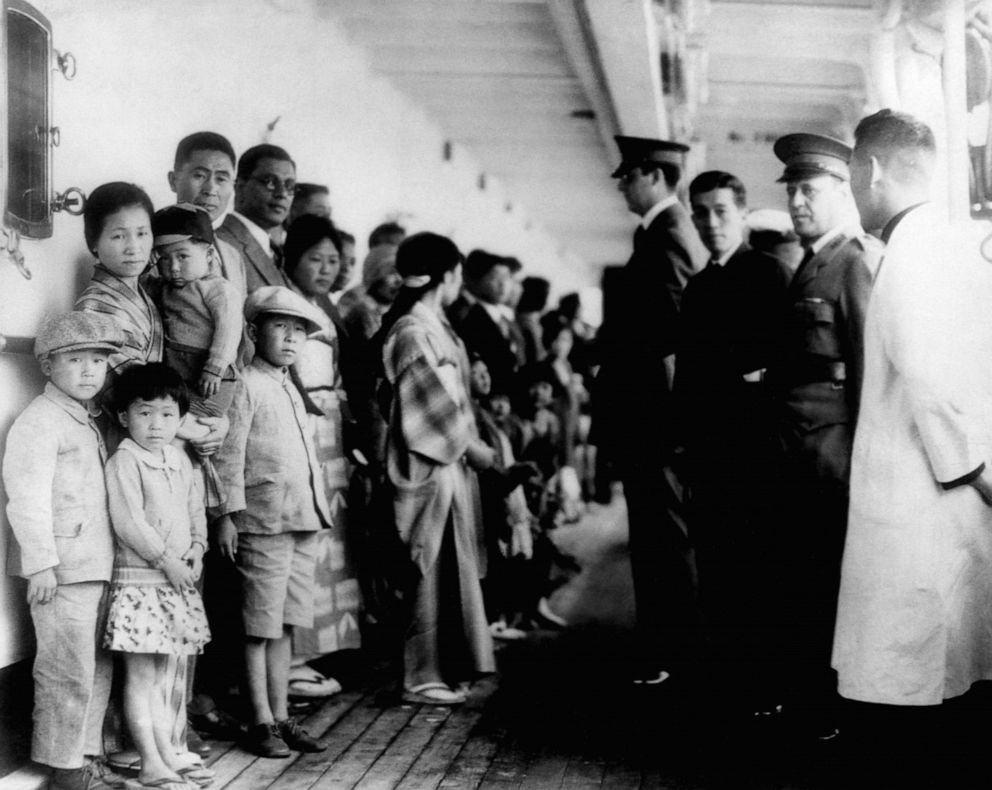
“Angel Island, then, in the minds of many of these migrants is a site of detainment, detention, discrimination, racial hostility, and exclusion,” said Sohi. “It just doesn't evoke the same kinds of emotions and symbols of welcoming, of building a new life, perhaps, that one may associate with Ellis Island.”
According to Sohi, while South Asians from countries like India were still legally allowed to enter the United States in the early 1900s, rising anti-immigrant sentiments and xenophobia fueled a push by politicians and immigration officials at Angel Island to exclude South Asians through “a law called the ‘likely to become a public charge clause.’”
Officials argued that immigrants from South Asian countries like India will face intense “racial prejudice,” which will likely prevent them from gaining employment, and would therefore make them likely to require public benefits, Sohi said.
Another immigration crackdown
In 1924, Asian immigration to the U.S. would largely cease through the passage of the 1924 Immigration Act, which set quotas based on “national origin” and barred anyone ineligible for citizenship from entering the U.S.
At the time, anyone not “white” or of “African ancestry” was ineligible for citizenship.
According to Sohi, those two provisions “fundamentally shaped what this country looked like for the next 40 years.”
Japanese internment
After Japan attacked Pearl Harbor, a U.S. naval base in Honolulu, Hawaii, President Franklin D. Roosevelt established Japanese internment camps, forcibly removing Japanese American families from their homes and putting them in concentration camps.
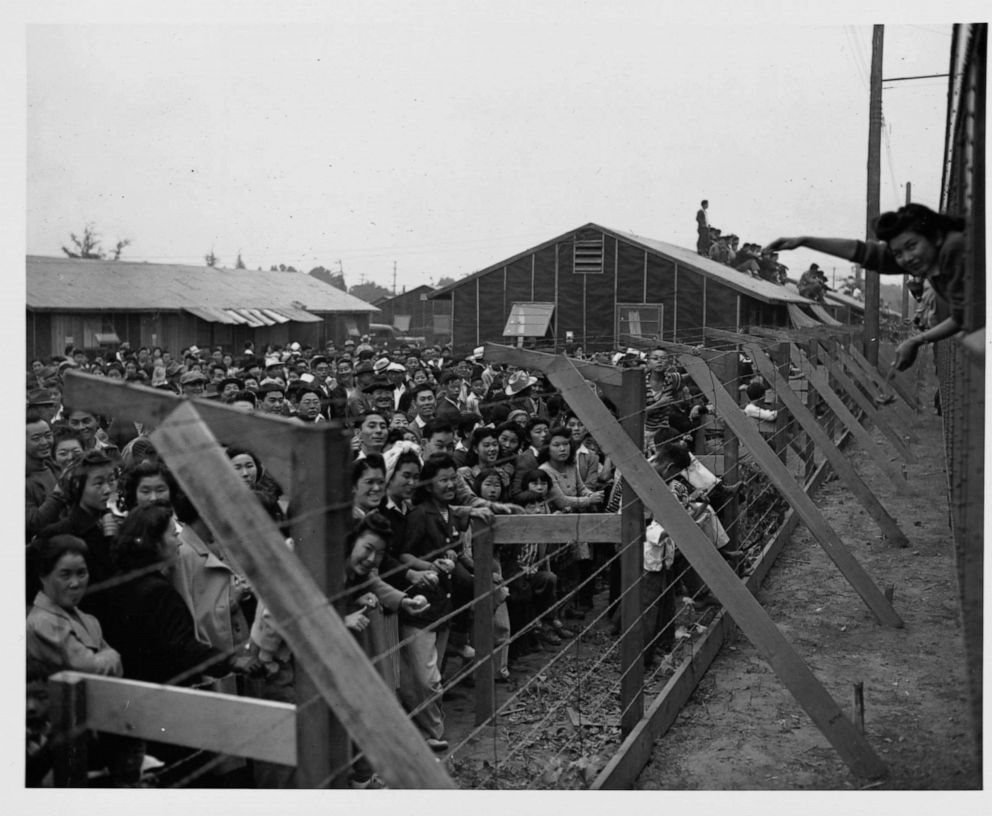
Of the tens of thousands of Japanese immigrants who were removed, about two-thirds were American citizens.
Norman Mineta, who became the first Asian American Cabinet secretary and one of the early champions for honoring the contributions and history of Asian Americans and Pacific islanders in the U.S., was 10 years old at the time.
Mineta, who was born and raised in the U.S., was imprisoned by his own country.
He reflected on the experience in a PBS special, “Norman Mineta and His Legacy: An American Story.”
“The day that we left San Jose on the train, I turned around, and looked at my father, and saw all these tears coming down,” Mineta said. “And I'm quite sure that was a reflection of his looking back on life since coming to the United States in 1902 and seeing all that he's done to build a life for himself and his family, all being lost.”
A right to citizenship
Asian immigrants were finally granted American citizenship when the McCarran-Walter Act of 1952 was passed, removing restrictions on naturalization based on national origin.
Various immigration quotas based on national origin remained in place, but those policies continued to favor Europeans.
Meanwhile, quotas for Asian immigrants were so small that overall immigration for the group was capped at 2,000 per year through the Asian-Pacific Triangle restriction.
Hawaii becomes a state
Hawaii became the 50th state on August 21, 1959, but until this day, there is a movement among Native Hawaiians advocating for the island’s sovereignty.
“A lot of our scholars are questioning whether Hawaii was truly annexed because there was never a treaty of annexation,” McGregor said.
“I was born in the territorial period,” she added. “I always felt that Hawaii was independent … that we have a right to reestablish our independence.”
Immigration reforms
President Lyndon B. Johnson signed the Immigration and Nationality Act into law on October 3, 1965, ending long-standing immigration policies based on national origin and race.
Immigration from Asian countries rose significantly, but there were still limitations for Asian laborers, as entry was granted to professionals like doctors and engineers.
The labor movement
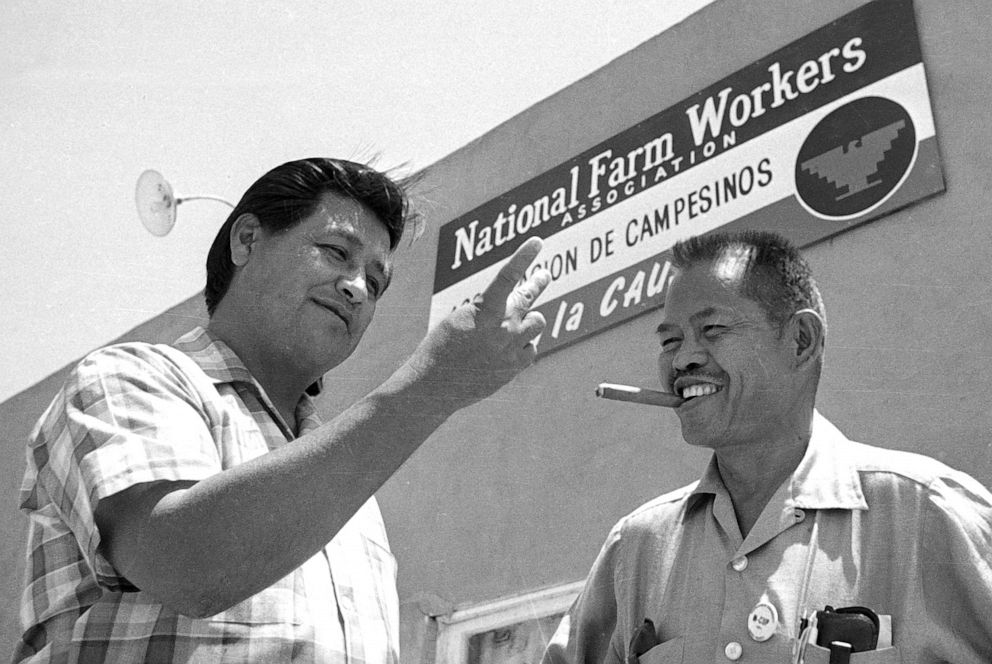
Larry Itliong, a Filipino American labor organizer who led the Agricultural Workers Organizing Committee (AWOC), was a key figure in the worker's rights movement.
"He was the one who kind of came up with the idea of trying to strike for better working conditions," Ho said. "And he also realized that the Filipino laborers would be stronger if they were working in coalition with Mexican American farm laborers."
Itliong's AWOC merged with César Chávez and Dolores Huerta's National Farm Workers Association (NFWA) in 1962 and formed the United Farm Workers of America, a labor union that revolutionized the fight for worker's rights.
The civil rights movement
Asian Americans were on the forefront of the Civil Rights movement of the 1950s and 1960s, although their contributions are often overlooked.
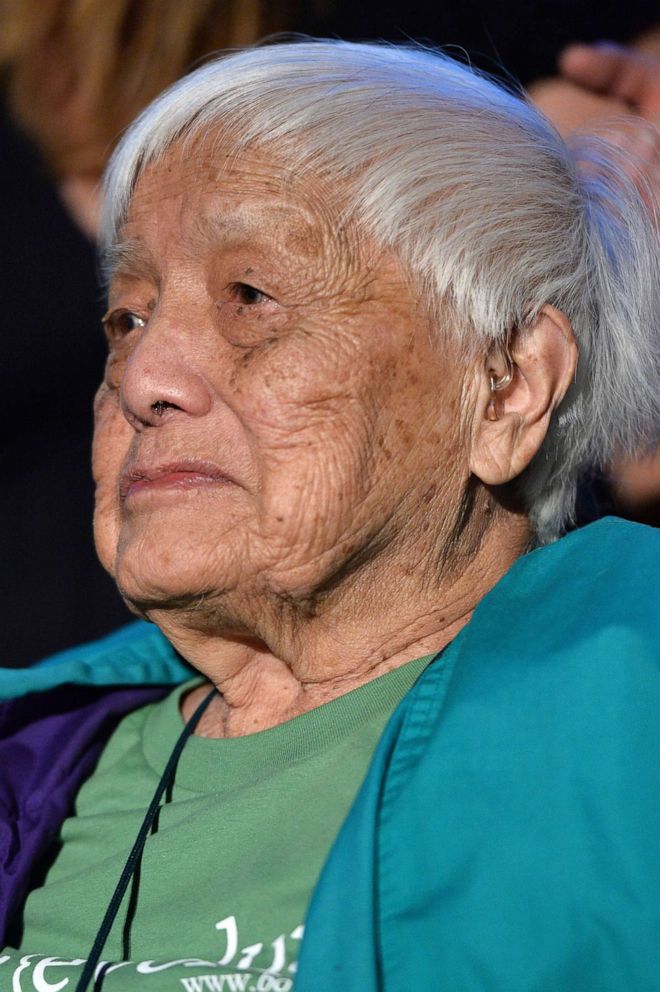
Grace Lee Boggs, a Chinese American social justice advocate in Detroit, and Yuri Kochiyama, a Japanese American activist, were on the frontlines of the Black civil rights movement.
Lee Boggs, along with her husband James, a prominent Black activist and organizer, helped to establish the National Organization for an American Revolution.
Ho said that Boggs was a model for what is means to "fight for human rights" and to "be an activist for in your local community."
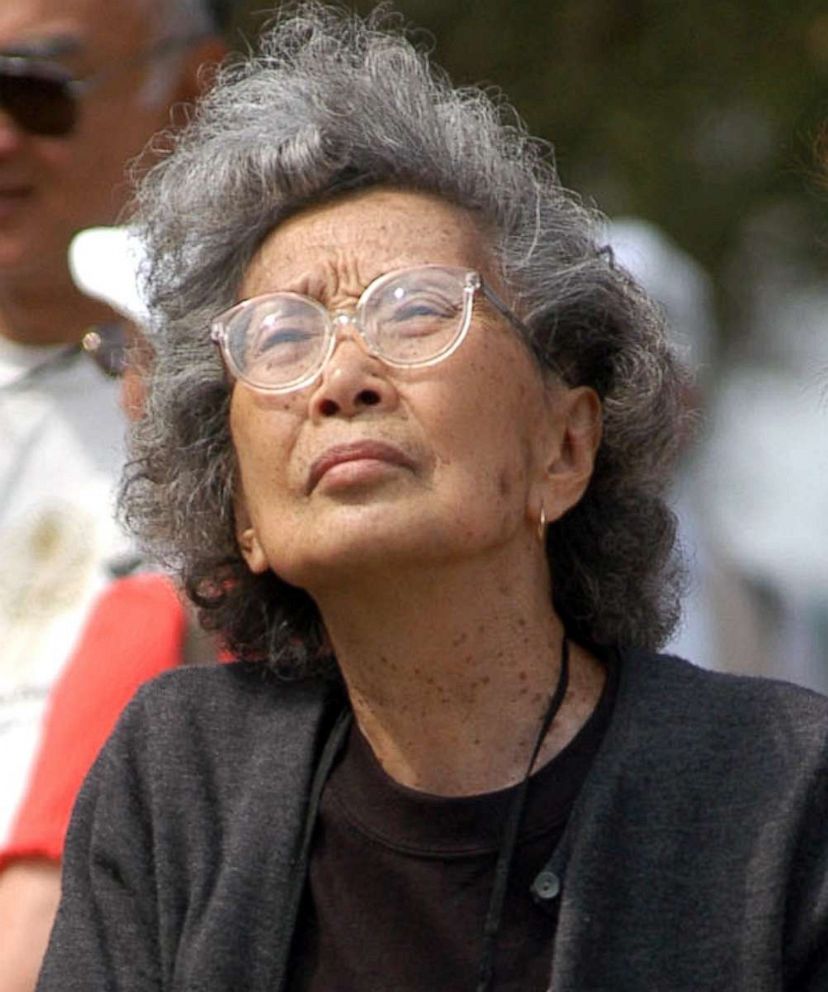
Kochiyama, an activist in Harlem, was a supporter of the Black liberation movement. She worked with civil rights leader Malcolm X and was there when he was assassinated in 1965.
Kochiyama is known for her "commitment to coalition building," Sohi said, and "her insistence that Asian Americans should always understand their struggles in larger contexts -- of war, of U.S. militarization, of empire, of anti-Black racism."
Women’s rights
Patsy Mink, a third-generation Japanese American, became the first woman of color elected to Congress in 1965 when she won a seat in the House to represent Hawaii.
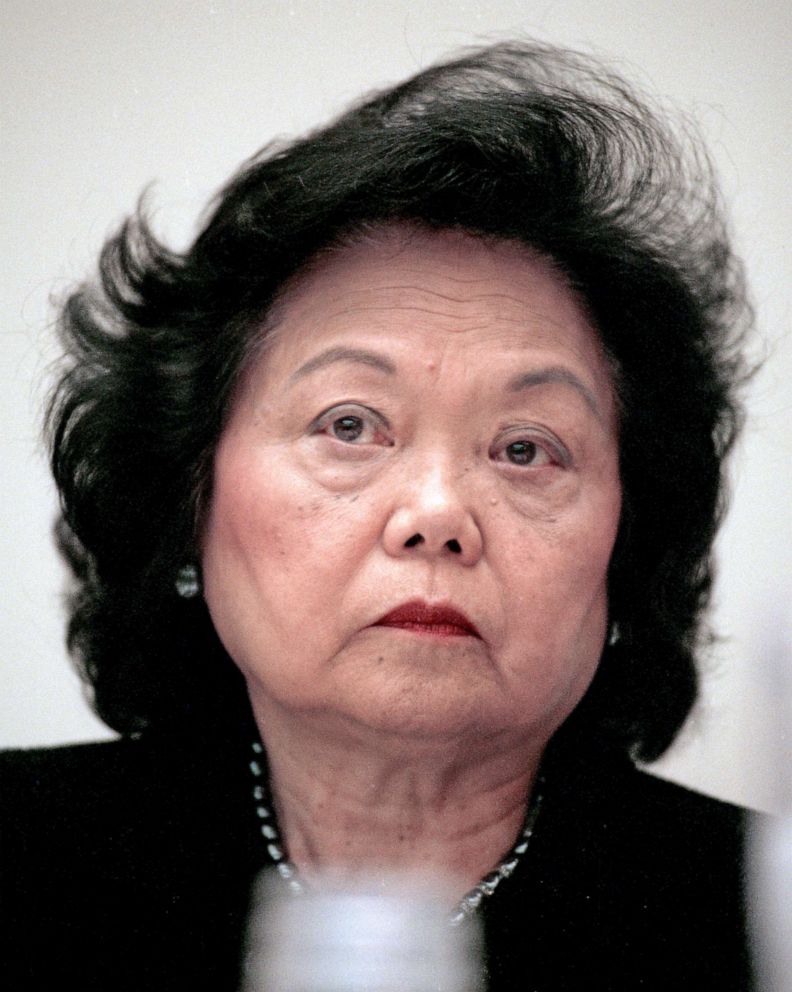
Mink was instrumental in the fight for women's rights and co-authored the Title IX Amendment of the Higher Education Act, which prohibits sex discrimination in schools or educational programs that receive federal funding.
"Title IX legislation is something that really has fundamentally changed the lives of girls and women around the nation," Ho said.
Title IX legislation was renamed after Mink in 2002.
The origins of AANHPI Heritage month
Mineta, who became the first Asian American mayor of a major city when he won election as the mayor of San Jose, California, in 1971, would go on to represent California in Congress from 1975–1995, where he fought for Asian American and Pacific Islander representation and founded the Congressional Asian Pacific American Caucus.
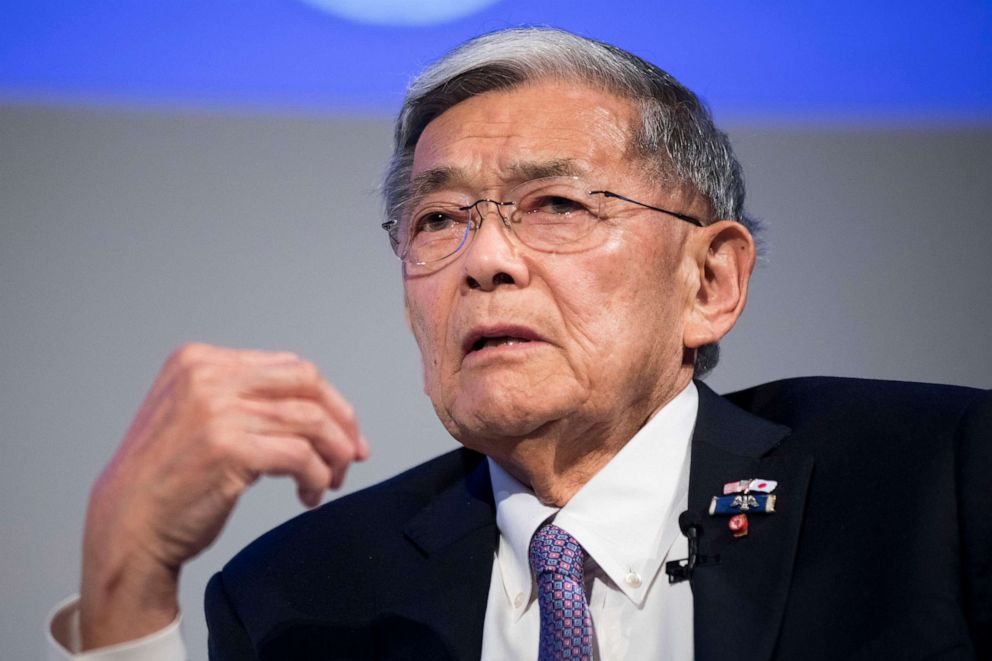
He also introduced a bill with Rep. Frank Horton of New York in 1977 to establish Asian Pacific Heritage Week at the beginning of May – the origin of AANHPI Heritage Month. A similar resolution was introduced in the Senate and in 1979 then-President Jimmy Carter signed a joint resolution into law to honor the community. President George H. W. Bush extended the week-long celebration to a month in 1992.
Mineta died on May 3, 2022.
In “Enemy Child: The Story of Norman Mineta, a Boy Imprisoned in a Japanese American Internment Camp During World War II,” author Andrea Warren documents Mineta’s story through first hand accounts and his own words.
“We often liken America to a melting pot where we blend together, giving us one identity. But I think our strength is rooted in our differences,” Mineta said in “Enemy Child.” We are all strands of yarn – different textures, different colors – woven together, we make a strong, integrated whole.”
ABC News' Rayner Ramirez contributed to this report.




